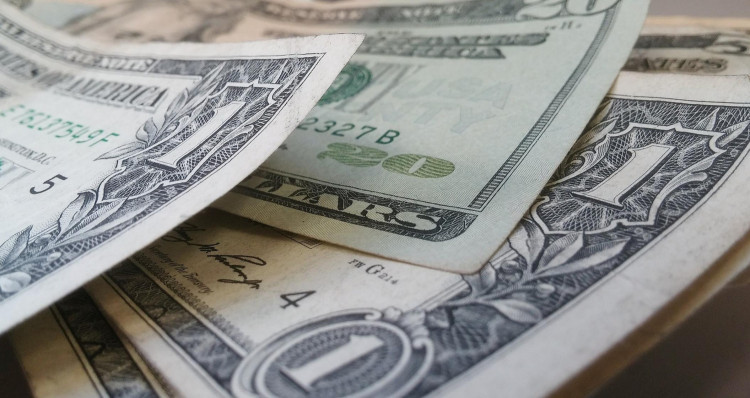With a tight U.S. presidential race intensifying, the dollar declined sharply on Monday, accompanied by falling Treasury yields, as investors recalibrate expectations following polls showing Kamala Harris gaining ground. These developments set a jittery tone ahead of Tuesday's election and an anticipated Federal Reserve rate cut later this week.
An index tracking the U.S. dollar against other major currencies fell the most in six weeks, dropping 0.3% to 103.63, while 10-year Treasury yields slipped 10 basis points to 4.28%. Meanwhile, Harris leads by a narrow 49%-46% margin over Donald Trump in a recent ABC News/Ipsos poll, reshaping market sentiment that had previously leaned toward a Trump win.
"Somehow markets persuaded themselves that Trump was well ahead and had been priced as if it was quite a clear victory for him, which seems crazy," Erik Nielsen, chief economics adviser at UniCredit SpA, told Bloomberg TV. "What you're seeing now is a realization that we got ahead of ourselves."
The ripple effect from changing election expectations was felt across financial markets. The Mexican peso, often vulnerable to U.S. political shifts, showed strength as investors walked back their Trump-aligned trades. Wall Street futures, however, posted only minor changes, with S&P 500 futures up 0.1% and Nasdaq futures flat. Energy stocks saw gains after OPEC+ confirmed a one-month delay on its planned oil production hike, which helped lift oil prices nearly 3%.
The dollar's decline extended across major currencies, including a 0.6% fall against the euro, bringing it to $1.090, and a 1% drop against the yen, reaching 151.62. This shift aligns with investor concerns that a Harris administration could signal more measured fiscal policies, in contrast to the inflationary risks associated with Trump's aggressive spending and tariffs.
The evolving political landscape has placed the U.S. election at the forefront of market focus. "Tomorrow will shape the direction of the world economy and geopolitics for the next four years," analysts at Deutsche Bank noted, while cautioning about "a large degree of uncertainty around both the result...and when we will know it." Given the narrow margins, some analysts warn that delays in vote counting could further unsettle investors and amplify market volatility.
Another key factor on the horizon is the Federal Reserve's rate decision, expected on Thursday, with markets anticipating a 25-basis-point cut. Analysts widely see this move as a strategic pause to assess inflation and employment data while also considering the election's impact on future fiscal policy. "Based on current data, we see no reason for the [Fed] to rush through rate cuts," said ANZ analysts, who also noted that "uncertainty over the future fiscal path" could prompt caution.
European and Asian markets also displayed muted reactions amid the election-driven uncertainty. European stocks edged up, with the STOXX 600 rising 0.2% and British stocks gaining 0.5%, helped by energy sector gains. Asian stocks mirrored this cautious optimism, as the MSCI Asia-Pacific index gained 0.7%, bolstered by Chinese equities amid stimulus hopes.
Adding to the global economic mix, the Chinese government is holding its National People's Congress (NPC) meeting this week, where it is expected to discuss significant fiscal policies, including a potential issuance of over 10 trillion yuan ($1.4 trillion) in extra debt to support its economy. Chinese stocks gained on anticipation of these measures, with the CSI 300 up 1.4% and the Shanghai Composite rising 1.2%.
Oil markets responded to the weekend announcement from OPEC+ to delay a planned production hike, leading to a notable rally. Brent crude futures rose 2.8% to $75.19, and U.S. West Texas Intermediate crude climbed 3% to $71.64. The delay reflects OPEC+'s caution amid recent volatility in energy markets and an escalation in Middle East tensions, which could add supply risks.
In addition to the Fed's rate decision, investors are eyeing other central banks this week. The Bank of England is expected to ease rates by 25 basis points in response to market turbulence following the new Labour government's budget, while central banks in Australia, Sweden, and Norway will also convene to decide on rates. Analysts expect the Reserve Bank of Australia to adopt a similar approach as the Fed, with modest adjustments to counter inflation without risking further economic cooling.






